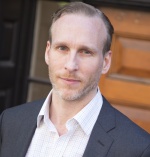Asked and Answered, With Implications for Philanthropy
 by Michael Hamill Remaley, SVP, Public Policy & Communications
by Michael Hamill Remaley, SVP, Public Policy & Communications
This piece was originally published as the feature article of the December 2015 issue of the New York PhilanthroPost Policy Edition.
In this column last June, I wondered “Is Overhead Having a Moment?” I took a look at several developments, including the U.S. OMB Uniform Guidance on Overhead mandating state and local contracts with nonprofits that use any amount of federal funds must allow for budgets that include, at minimum, 10% for indirect costs.
Since then, there have been important developments here in New York that tell us, yes, overhead is definitely having more than just a moment. On October 15, Philanthropy New York convened New York State and City leaders, the leaders of many of the city and state nonprofit advocacy organizations, the leaders of several large social service delivery organizations and leaders from some of the philanthropic organizations that have focused on nonprofit health in our region to talk about how NY State and City governments are responding to OMB Guidance. It was a highly productive, albeit somewhat inconclusive, discussion in which every attendee contributed important perspectives on a topic where there are conflicting imperatives.
At our convening, government representatives demonstrated the commitment to implement the OMB Uniform Guidance. There is no question; however, that commitment will be complicated in practice and will require the nonprofit community to be educated about what they are entitled to receive. And that is where philanthropy can be helpful.
We heard loud and clear from those we convened in October – both from the nonprofit and government sides – that having the philanthropic community convene the parties and make this issue a priority was particularly important. It was also said that, because so much education needs to happen on both the government and nonprofit sides of the contracting process so that all line workers know what nonprofits are now entitled to, philanthropy could play a vital role in supporting those educational efforts.
Lastly, it was clear that all philanthropic organizations could be helpful by having extensive conversations with the nonprofits they support to ensure that they are aware of the OMB Guidance and what they are entitled to when they negotiate government contracts. These conversations may also advance the conversation funders are already having with their grantees about fiscal stability, budgeting and indirect costs.
In communicating with attendees after the October meeting, we heard that a second convening in March 2016 would be a good time to check in on how City and State were doing in responding to the OMB Guidance and decide if further action is warranted. Philanthropy New York has committed to making that happen and will continue to monitor developments.
If you would like to be included in the next convening in March, please let me know by email.
